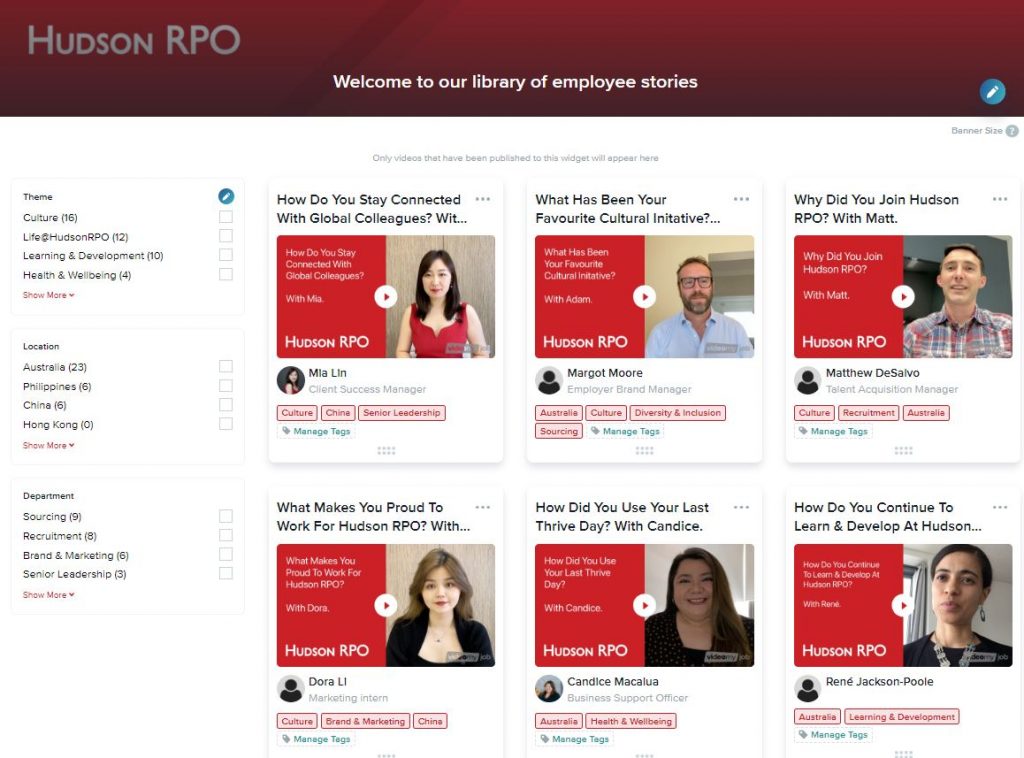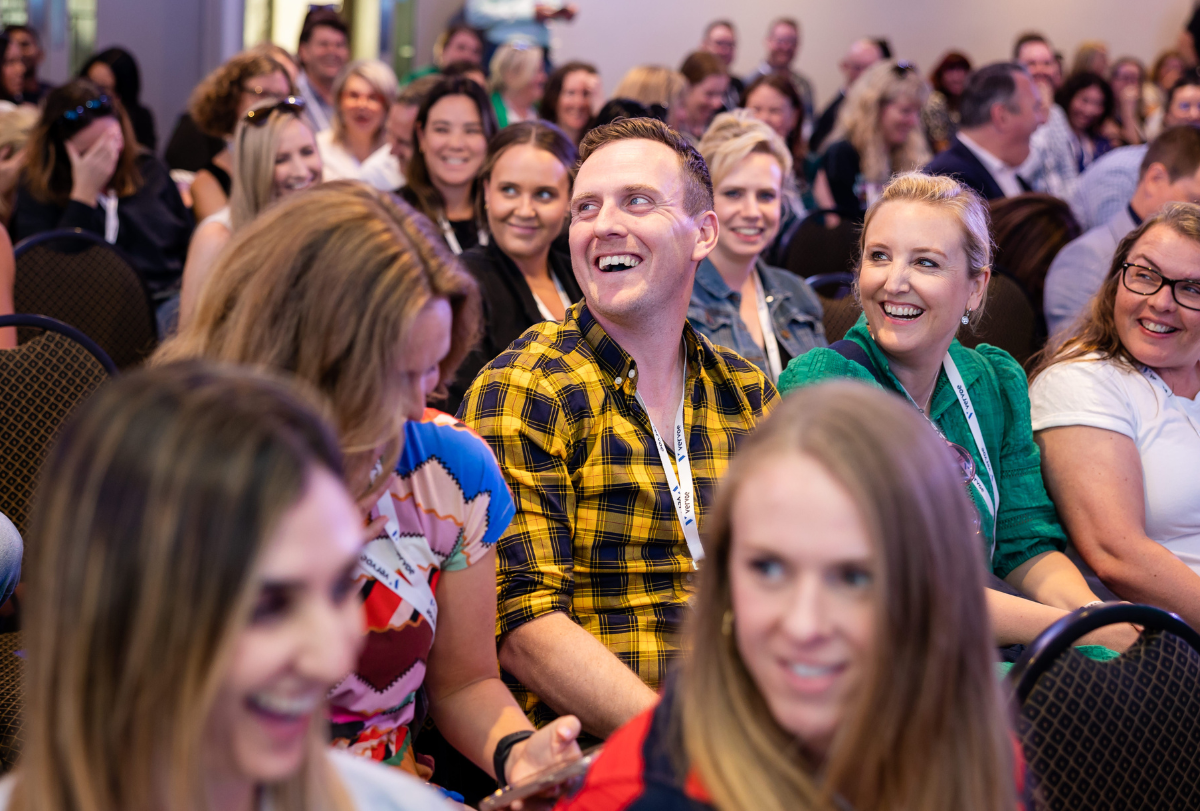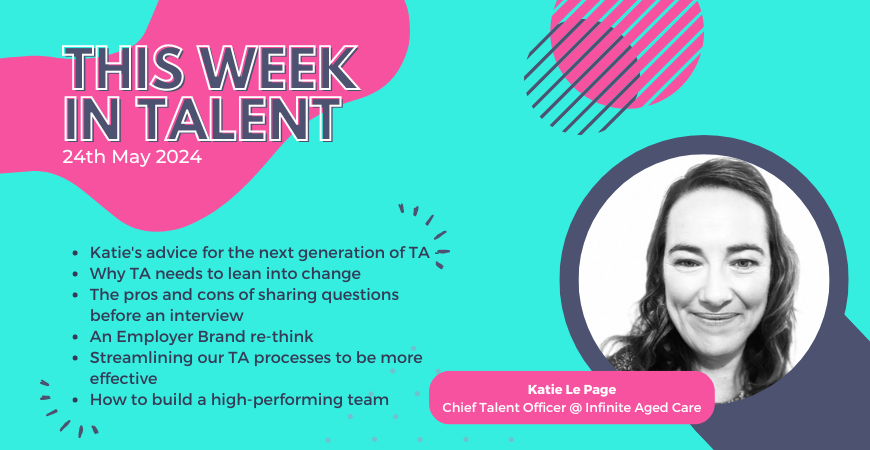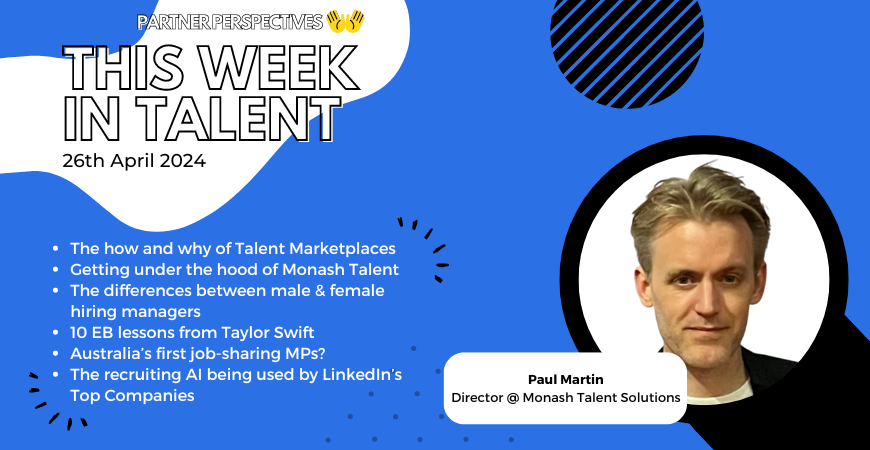The 2021 State of Video in Talent report found that almost half of all talent professionals are focussing on capturing and sharing their employee stories as a key part of their talent strategy. We spoke to leading employer brand specialists from some of Australia’s largest organisations to find out exactly how they use video to build a connection with prospective candidates and highlight the stories of their team members.
This article is delivered in partnership with VideoMyJob.
In today’s competitive recruitment market, simply posting an ad on a job board is not enough to guarantee a healthy shortlist of qualified applicants.
Candidates have moved beyond the expectation that their job will be a bullet list of tasks. They want to understand what it will feel like every day to work for an organisation and what they can expect that experience to look like. And it can be hard for recruiters to capture that sentiment entirely within a 500-word job description.
While it may seem more in place in a bedtime story than a recruitment campaign, storytelling can be a powerful tool for talent teams to create authentic and trusting relationships with passive candidates. And as recruiters fight to engage with key talent in today’s talent-short market, building authentic dialogue between candidates and organisations is crucial.
Video is an effective medium when sharing these stories to help cut through the digital noise we all face in the course of our daily work-lives. However, while the talent community isn’t new to the idea of using video – posting video job ads has been a normalised practice for a number of years now – there still seems to be hesitancy around using video as a storytelling tool. The 2021 State of Video in Talent report found that while 68% of all global respondents use video in their recruitment strategies, only a third of those respondents use it to share their employee and company stories.
”When we started VideoMyJob, the problem we were solving was how could we bring job ads to life using video. Now using video in job ads is table stakes. They’re an expectation, not a unique selling proposition—much like flexible work and diverse culture,” says David Cervelli, Global VP of Growth at VideoMyJob.
“But job ads are great until you find the perfect hire. From our 2021 State of Video in Talent Survey, we discovered that 49% of talent professionals are now hyper-focused on capturing and sharing employee stories for 2022.
“Employee stories are important in every part of the candidate journey, not just the offer stage. They have an extremely long shelf life and can be reused in so many different parts of an employer branding strategy.
“The reality is that candidates always have and always will trust the view of existing employees over other communications,”’ says David.
To explore exactly how talent teams can make use of storytelling to meet their recruitment objectives, we sat down with 3 members of the employer brand community to find out how they have used storytelling via video in their talent strategies.
Sharing our employee stories
Short and engaging video content has allowed the Hudson RPO Employer Brand team to showcase personal experiences of employees working within the organisation. They’ve built an extensive library of 30-second videos on their careers page to showcase their employees across the APAC region.
Kathi May, Hudson RPO Director of Marketing & Employer Branding APAC says that being able to share employee stories helps the team to connect with one another when working in a highly distributed workforce, and enables Hudson RPO to continue to attract top talent that thrive off human connection and collaboration with co-workers.
*****
I love getting to know my colleagues through the stories of their experiences. We’re an Asia-Pacific business, so when we hear something about a colleague happening in China while we’re sitting in Melbourne on a Zoom call, it’s a great way to feel instantly connected with that person 9,000 kilometres away.
People will recall a great story – they may not remember all the details, but they’ll remember how it makes them feel. And of course, being in the line of work that we’re in we’re always searching for ways to strengthen those emotional connections with our business, our employees, and our candidates. Storytelling allows us to connect with people on a real and emotional level.

As well as featuring short, video stories of our employees on our careers page, we’ve recently started highlighting specific experiences of our Philippines team. Having been used to losing two hours every day by commuting one way to the office pre-Covid, our Manila team are now able to enjoy a more balanced lifestyle now that they are working remotely.
Burg is one of our Sourcing Specialists, and now that he’s working remotely, he’s able to help out on the family farm for a couple of hours after work. And another Manila-based employee, Eugene, who only used to see his 12-year-old daughter one day each month, but now that he’s working from home he’s able to spend most days enjoying special family moments.
I love hearing about these human moments from my colleagues, and so do others, which is why we’ve created a micro-site to share these employee stories more widely to promote the fact that we have a rich and diverse culture at Hudson RPO. This in turn helps bolster our employer brand and efforts in sourcing for quality candidate attraction.
We use multiple formats to tell these stories but what we find is that video is such a captivating medium. When dealing with emotive stories you can really connect with video, and it’s very authentic. We also use video a lot for our internal communications because it’s very quick to interact, very engaging, and much more memorable as well.
There are a lot of great employee stories out there to uncover. And we want to share these via these micro-story moments; short, bite-sized pieces of content that focus on one specific aspect. Doing so makes them easy to consume, and so people can watch as many as they want. Or they don’t have to watch any! But the point is, it’s their choice as to how many stories they want to consume. And I think that’s what makes this type of storytelling really wonderful, because when you create lots of short, bite-sized pieces of content, it contributes to a larger, more comprehensive story – it’s like putting all the pieces of the puzzle together to create this beautiful picture of your organisation and the people inside.
Driving diversity within the organisation
In 2017, Australia Post embarked on a journey to increase gender diversity within the distribution side of their business. Traditionally a male dominated sector, the organisation recognised that women “can’t be what they can’t see”, and so undertook an extensive campaign to show women what their career working as a postie or in a distribution centre could look like.
Quila Cervelli worked as the Employer Brand Manager at Australia Post between 2015 and 2018 and played a key part in the roll-out of the campaign.
*****
Australia Post has always had a really strong Diversity and Inclusion program, however much of this was traditionally focussed around the corporate space. When we looked at the distribution space there was the realisation that we really needed to adopt a more holistic approach to the diversity strategy.
Storytelling is a really effective tool. Just look at little kids who identify with one Disney character over another because of the colour of their hair or their favourite activity. And it’s no different for adults. People identify with and can see themselves in the “characters” portrayed in different stories.
When we were trying to recruit women, some of whom had been out of the workforce for a really long time, it was a real challenge to get them to visualise themselves doing a role in which they had never seen people like themselves. But just because these women didn’t look like their postie didn’t mean they couldn’t do the work.
So, we aimed to help women develop connections in their mind with their own identity and the work that was available. If a woman is busy bussing the kids around all the time in a minivan, who’s to say they couldn’t drive a postal van? Or even upskill to drive a delivery truck? And if she needs to work school friendly hours, who’s to say she couldn’t pick up a 10am-3pm shift? Storytelling was a really important tool in helping candidates recognise their own potential.
Once we turned that tap on that allowed women to recognise themselves in this work, the response was amazing. We had over 1,000 applications nationally for the campaign! And while not all applicants were 100% appropriate, it really made us realise just how powerful storytelling via the medium of video could be. If you can share engaging content with the right audience, you boost your chances of bringing more diverse people into your business. We also realised that once the content was created we could re-use the stories for different elements of the campaign and simply change the call to action. For example, ‘Apply Now’ could easily be changed to ‘Express your Interest’ in between active recruitment intakes.
Video was always going to be a key part of this campaign, but what we didn’t realise was just how long these videos were going to last. These videos have lasted through 2 generations of the Australia Post employer brand evolution, and I love seeing them on the careers page all these years after the original campaign launched back in 2017. I personally find it really rewarding having been involved in the campaign, not just due to the diversity objectives it achieved within Australia Post, but also because of the lasting impact it had on the organisation’s employer brand.
Promoting our organisational culture
With more than 22,000 employees across Australia, BUPA is one of the country’s largest health care insurance providers. Encouraging candidates to ‘Be at the heart of it’, BUPA faces the challenge of having to promote their company culture and employer brand to a broad range of varied professionals, including healthcare workers, customer service teams, tech gurus, and management professionals.
Meagan Michaels, Head of Employer Brand – APAC at BUPA, says that “showing, not telling” plays a really important role when it comes to promoting their company culture to prospective candidates.
*****
Culture isn’t just something you can easily define. It’s not a neat little strategy to put on your career site and forget about. Because culture is multi-faceted; It’s not just the perks or the flexible hours. It’s so many different things. It’s your management team, your policies, and your company attitudes that filter down through every level of the organisation.
It’s really hard to articulate an organisation’s culture in a tidy, succinct way. In fact, it really shouldn’t be articulated too neatly, because doing so makes it sound inauthentic and as if it’s all just part of strategy. And that’s not culture. Culture is something you should feel, not strategise.
This is where storytelling is so powerful. Our storytelling is really about showing, and not telling. It allows us to leverage our employee voices to really bring our culture to life in a tangible way. We recently developed a series of videos featuring members of our corporate services team to highlight the importance we place on innovation and driving change. Those stories are much more powerful than just showing pictures of people hotdesking on your careers page.
We use video at BUPA to bring the authentic voices of our people to life and to show our culture in action. And that allows us to be really active with how we show culture. For example, when Covid first hit in 2020 we created a hardship team to support our customers; caring is a hugely important value at BUPA – both for our customers and our employees – and we wanted to highlight this value by sharing the story of how we implemented our customer care plan when our people were experiencing some really tough times.
We also find that video as a medium is one of the most accessible ways to tell stories. It’s particularly great in the employment space because people who are job-hunting are often time-poor – they don’t have the time to read an article or listen to a full podcast. So being able to have video that goes for a varying length of time – whether that’s a quick 30 second clip or a more in-depth video that goes for a couple of minutes – means that you can tell the same story with the same people while targeting different audiences based on what attention they can give at that time. Video is also a particularly attention-grabbing medium. It brings together that beautiful human compulsion to want to see people’s faces, and really bring people’s voices to life. That allows your audience to connect more easily with your employer brand; potential employees can actually visualise themselves working at your company.
Storytelling is an ongoing process. The nature of telling the stories of your company culture and values means that you’re using employees, not actors and if you want to keep it real you need to be conscious of the fact that many employees move on and their situation changes. If you’re not creating new content on a regular basis, you risk missing out on those fresh voices and stories in your organisation.
Cover Image: Shutterstock
































